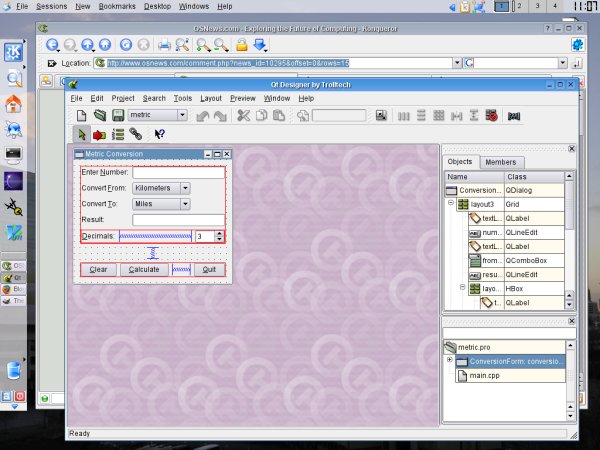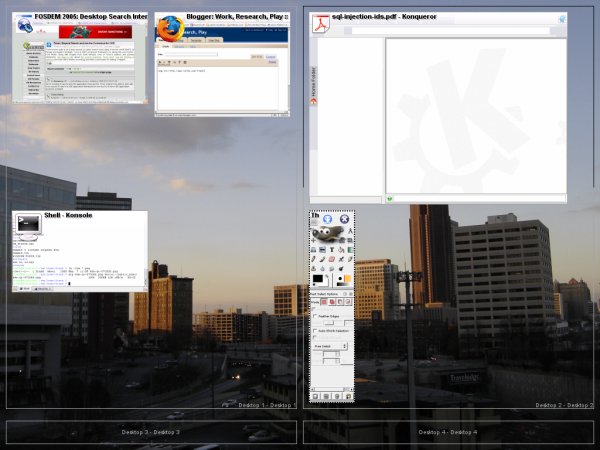Improving my personal efficiency with KDE.
I have recently been struck with the “how can a good graphical environment help me be more efficient” bug. Many of the people I work with have migrated to Apple laptops for various reasons. It seams like the majority opinion is that Mac OS combines the best of the UNIX world with a very productive, HCI-friendly user interface and more applications. However, I do not own an Apple laptop so I figured this was a good opportunity to play around with the new KDE 3.4 on my FreeBSD 5.3-powered Toshiba Satellite. To sum it up, I like it and here is a screen shot of my current configuration with some random KDE-centric applications opened:

This is pretty much the stock KDE with very few tweaks to the interface. I moved the task bar to the left side of the screen and set it to be partially transparent and to act a little more like a cross between the CDE and Mac OS toolbars. I turned on the global menu option and dragged several of the toolbar applets to the top-right of the screen.
I installed Komposé from the FreeBSD ports collection, which allowed me to assign hot corners so that by simply hovering the mouse pointer over either the top or bottom right-hand-side of the screen I can see all of the windows open across all virtual desktops. The Mac OS users will instantly recognize this as similar to Expose and it is indeed a good way to visually track windows on the system.

This is not a review of KDE, just me stating that I like it. I expect to spend some more time playing around over the next few months. Perhaps I will end up with an Apple laptop sometime next year. The long battery life and UNIX environment would be very helpful for me.
I am really look forward to finding better ways to organize and work with my data. Project Tenor seams very interesting indeed. The OS News article is a good place to start to look at it. The prospect of not only being able to find data but to automatically discover functional relationships among data is a very interesting idea.
Well, that is enough for now. Back to work.
